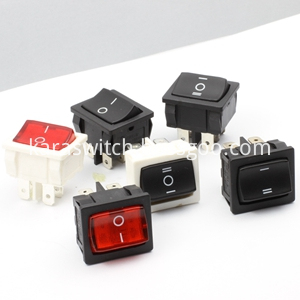1 Introduction
Since the birth of light-emitting diodes ( LEDs ), full color and high brightness have been realized, and white LEDs have been developed on the basis of blue LEDs and violet LEDs. It brings a rush to the history of people's total lighting. Compared with self-igniting lamps and fluorescent lamps, LEDs have been widely used in automotive lighting, finishing lighting, telephone flash, and large and medium sizes due to their small size, all solid state, long life, environmental protection, and power saving. NB and LCD. TV and other display light source modules.
LED has become one of the most promising high-tech areas in the past century. LED is an injection electroluminescent device. Made of III-IV compounds, such as gallium phosphide (GaP), gallium arsenide (GaAsP) and other semiconductors under the action of ~I-DN electric field. The electrolysis of electrons and holes combines to convert a portion of the energy into light energy. That is, the quantum effect, while the lattice vibration generated by the non-radiative compounding converts the rest of the energy into heat. At present, high-brightness white LEDs have reached the level of 1001m/W in the laboratory, and 501m/w high-power white LEDs have also entered commercialization. Single LED devices have also jumped from the first few milliwatts to 1,5. kW. For high-power LEDs larger than 1W, the current electro-optical conversion efficiency is about 15%, and the remaining 85% is converted into heat. The chip size is only 1mm × 1mm ~ 2. 5mm ~ 2. 5mm. This means that the power density of the chip is very different from that of the conventional lighting device. The white LED does not contain the infrared portion in the luminescence spectrum. Therefore, its thermal energy cannot be relied on by radiation. Therefore, how to improve the heat dissipation capability is one of the key technical problems that need to be solved in the industrialization of high-power LEDs.
2 The effect of thermal effects on high power LEDs
For a single LED. If the heat is concentrated in a chip of a small size, it cannot be effectively dissipated. This will cause the temperature of the chip to rise. The non-symmetric distribution causing thermal stress, the luminous efficiency of the chip, and the lasing efficiency of the phosphor are lowered. Studies have shown that when the temperature exceeds a certain value. The device's failure rate will climb exponentially. For every 2 °C rise in component temperature, reliability will drop by 10%. In order to ensure the lifetime of the device, the junction temperature of the pn junction is generally required to be below 110 °C. Follow the temperature rise of the pn junction. The white light LED device's illuminating wavelength will be red-shifted according to the count data. At a temperature of 100 ° C. The wavelength can be red shifted by 4 to 9 nm. As a result, the absorption rate of the YAG phosphor is decreased, the total luminescence intensity is reduced, and the white chromaticity is deteriorated. At room temperature, the temperature increases by 1 °C. The luminous intensity of the LED will be reduced by about 1%. When the device rises from ambient temperature to l20 °C. The brightness drops by as much as 35%. When multiple LEDs are densely arranged to form a white light illumination system. The dissipation of heat requires more serious questions from others. Therefore, solving the problem of heat dissipation that needs to be answered by others has become a prerequisite for power LED applications.
3 Research progress at home and abroad
A solution to the heat dissipation problem of high power LEDs. Device presetters and manufacturers at home and abroad have optimized the thermal system of the device in terms of layout, materials and processes. E.g. In the package layout, accept large-area chip flip layout, metal circuit board layout, thermal bath layout, micro-flow array layout, etc.; in the selection of materials, select the appropriate substrate material and adhesive material, replace the epoxy with silicone resin Resin.
3, 1 package layout
In order to meet the problem of packaging heat dissipation of high-power LEDs, various layouts have been developed internationally, including:
(1) Silicon-based flip chip (FCLED) layout
Conventional LEDs accept a formal layout that is usually coated with a layer of epoxy. The sapphire is accepted as a substrate below. Due to the poor thermal conductivity of epoxy resins. Sapphire is also a bad conductor of heat. The heat can only be dissipated by the pins under the chip, so it is difficult to dissipate heat in both front and back. Affects the performance and reliability of the device.
Kara offers a wide range of illuminated and non-illuminated Rocker Switches.Ranging from 1 to 6 poles,4VA to 30 amp,with many styles of colors and functions,especially the switches with High-Current used very widely in the welding machines. Certifications include UL, CSA, TUV, CE, and more. Kara Rocker Switches include the KR1-Series abd KR2- Series based on different size of the panel cut-out.

Rocker Switch,Waterproof Rocker Switch,Rocker Switch 3 Pin,Rocker Switch 4 Pin
Ningbo Kara Electronic Co.,Ltd. , http://www.kara-switch.com